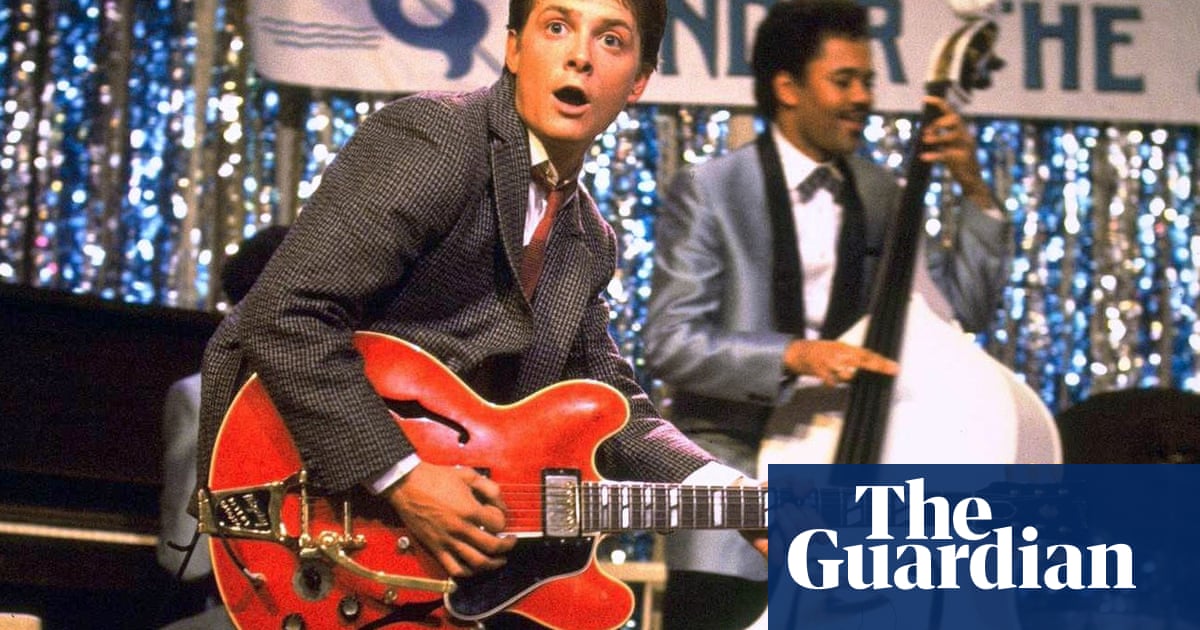The article highlights a nostalgic search for the iconic guitar used by Michael J. Fox’s character, Marty McFly, in the classic film "Back to the Future." As the film approaches its 40th anniversary, Gibson is actively engaging fans and the public to help locate the missing cherry red Gibson ES-345 guitar, which has remained elusive since the production of the film's sequel. This endeavor not only serves as a promotional strategy for Gibson but also rekindles fond memories associated with the film.
Nostalgia and Community Engagement
The search for the guitar taps into the collective nostalgia of fans who grew up watching "Back to the Future." By involving the original cast and using social media to amplify their message, Gibson is fostering a sense of community. The emotional appeal, particularly through the participation of beloved actors like Michael J. Fox and Christopher Lloyd, seeks to resonate with fans and encourage them to take part in this quest. This connection to the past may serve to enhance brand loyalty toward Gibson, intertwining the company’s identity with the cultural legacy of the film.
Public Sentiment and Perception
The campaign presents an opportunity for fans to feel involved in a cherished cultural artifact's recovery. This sense of collective participation could foster a positive perception of both the film and the Gibson brand, suggesting that the company values its history and community. The playful tone of the video, especially with Lloyd's and Fox's humorous references to time travel, enhances the light-hearted nature of the search, making it appealing across various demographics.
Potential Underlying Agendas
While the immediate narrative focuses on the search for the guitar, it can be viewed as a strategic marketing move by Gibson to promote its products and possibly boost sales, especially as they coincide with the release of a documentary. The timing of the search aligns with the film's anniversary, which may lead to renewed interest in vintage guitars, particularly those associated with popular culture.
Trustworthiness and Authenticity
The information presented appears credible, as it references known entities (Gibson and the original film’s cast) and their roles in the search. However, some skepticism might arise regarding the authenticity of the search. The notion of a "lost" guitar may also be a narrative tactic to generate buzz and media coverage, rather than a genuine effort to recover a specific item.
Cultural Impact and Market Dynamics
Given the iconic status of "Back to the Future," this news story could stimulate interest in related merchandise, potentially impacting the collectible guitar market. Stocks related to Gibson, or even those of companies that produce similar products, might see fluctuations based on public interest generated by this nostalgic campaign.
Target Audience
The content primarily appeals to fans of classic films, music enthusiasts, and collectors of memorabilia. By leveraging nostalgia and the cultural significance of the film, the campaign is likely to attract a diverse audience, including both older fans and younger generations discovering the film for the first time.
Global Context and Relevance
While the article might not directly relate to pressing global issues, it reflects a broader trend of nostalgia marketing that resonates well in today’s culture. The emphasis on cherished memories and the revival of classic films aligns with contemporary societal interests in retro and vintage experiences.
Artificial Intelligence Influence
It’s plausible that AI tools were used in crafting the narrative or enhancing the promotional aspects of this campaign. AI could contribute to video editing or social media strategies, ensuring that the message resonates effectively with the intended audience. However, the core sentiment and emotional appeal seem to stem from genuine human connections rather than AI manipulation.
In summary, this article serves as a multifaceted approach to blending nostalgia with modern marketing. It effectively engages an audience while promoting a brand's historical significance, potentially leading to both cultural and economic impacts.
